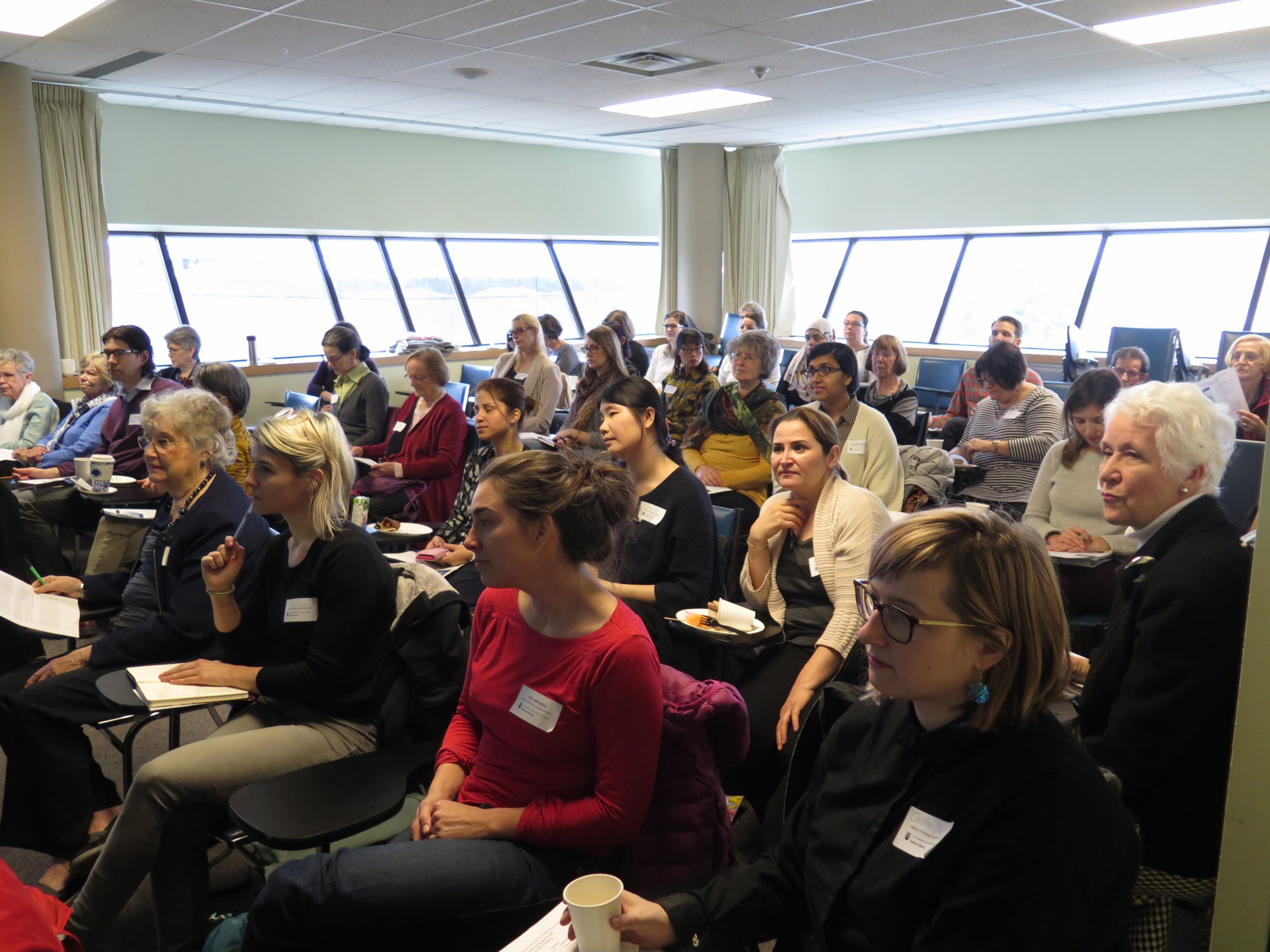Arts, Crafts & Healing
2017 Nursing History Symposium
On March 2nd, 2017, the fourth Nursing History Symposium was held in the School of Nursing under the umbrella of the UBC Consortium for Nursing History Inquiry. The symposium examined interconnections between arts, crafts and healing in the history and current practice of professional work. Keynote speaker Dr Sasha Mullally from the University of New Brunswick and three panel members, Dr Megan Davies from York University with Drs Alison Phinney and Helen Brown from the UBC School of Nursing. The panel explored ways arts and crafts have been taken up in various approaches to healing and within understandings of well-being and health promotion, whether from historical or current perspectives. The symposium provided ample opportunity to discuss and reflect on these important and critical connections, which, amidst the pressures of today’s health care, can easily be overlooked or undervalued. The topic engaged the audience of many community members, faculty, students, members of the BC History of Nursing Society, and friends of the School in vivid debate following the presentations, and even engendered some discussion on Twitter.
“All good tools, like all good men, sing at their work when properly treated.”
George Barton
Teaching the Sick, 1919
Dr Mullally’s presentation highlighted the history of therapeutic craft and explored connections between holistic ideas of health and healing, creative imagination, therapeutic work and rehabilitation. Her early research has investigated the way middle class women in New England used “therapeutic craft” as a tool for uplifting morale in rural communities and for social and economic rejuvenation in the early twentieth century. In recent years, Dr Mullaly has also begun a new research project that examines the history of “therapeutic craft” and creative work in the early years of North American occupational therapy. In this new study she explores the way early 20th century occupational therapy programs utilized creative work as a form of physical, mental, and spiritual rehabilitation. Her lecture was drawn from this project, entitled: To ‘Inoculate with the Bacillus of Work’: George Barton and the Making of Occupational Therapy, 1914-1923. The presentation related how proponents of occupational therapy came from a wide variety of backgrounds, including nursing, psychiatry, social work, general medicine, vocational education, and various fields within the arts and crafts. George Barton, industrial designer and arts and crafts patron, coined the term “occupational therapy” (OT) while organizing the first meeting of the National Society for the Promotion of Occupational Therapy (NSPOT). He hosted the inaugural meeting at his sanatorium, aptly named Consolation House, in upstate New York in 1917. The first NSPOT conference drew interest from across North America, and was an organizational turning point. Using Barton’s publications, memoirs and correspondence, Mullally showed how the healing potential of “therapeutic craft” prompted individuals like Barton to found a new field of practice. By understanding Barton, his Consolation House program, and how clinicians responded to his ideas, Dr Mullally noted how we are able to gain deeper insight into what many have called OT’s “multidisciplinary heritage of caring,” unique within rehabilitation medicine and nursing.
Three panel members responded to the presentation as a lead-in to a vivid discussion with the audience. Dr Brown drew from her involvement in a recent federal prison initiative, called Work 2 Give, in which incarcerated men make items (e.g. furniture, toys, and drums) for First Nations communities in rural and remote BC. Their artistic work impacts the men in ways that foster health and healing. Dr Brown discussed how crafting artful objects can catalyze human connection within and beyond prison walls, facilitating reciprocity with Tsilhqot’in communities that empower the men to re-imagine themselves and their future. Dr Davies spoke to the history of artistic therapeutic approaches in dementia care. She highlighted several key points from Dr Mullally’s talk and also provided her with a classic work on occupational therapy. She also drew from her own research on the history of dementia care and the use of music therapy as an innovative multi-disciplinary rehabilitation therapy program developed in the Valleyview care facility for geriatric residents at the former Riverview Hospital.
Via TWITTER:
“Bubbling over” with discussion of arts, craft, & healing.
– Catherine Backman (Dept of OS&OT)
“Bubbling over” for sure – meaningful activity, collective meaning, humanizing self-identities; curiosity, broadening perspectives, rich interdisciplinary dialogue – large part of health unexplored – affect of arts, identity, engagement.
– Suzanne H. Campbell
Another project relevant to her commentary was the documentary project, The Inmates Are Running the Asylum: Stories from MPA, a larger research website project showcasing multiple educational, artistic and mental health related projects. Finally, panel member Dr Phinney shared insights from several art-related projects which identify the capacities of older people for successfully coping with the functional consequences of aging and disease. Her projects highlight what can be done in partnership with families and communities to support frail older people both within and outside the traditional health care system.
At the lunch following, participants enjoyed a display of the BC History of Nursing Society and a book display by UBC Press of recent works in nursing history. All are invited to our 2018 History Symposium, details of which will appear on the School of Nursing Events page later this year.
Submitted by Geertje Boschma
